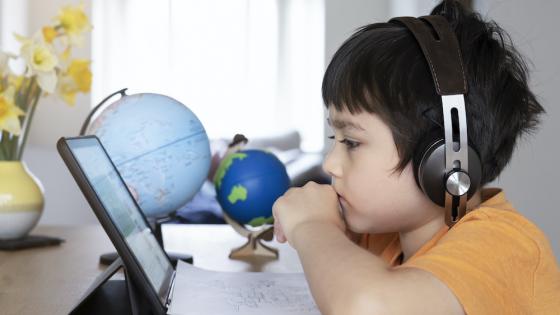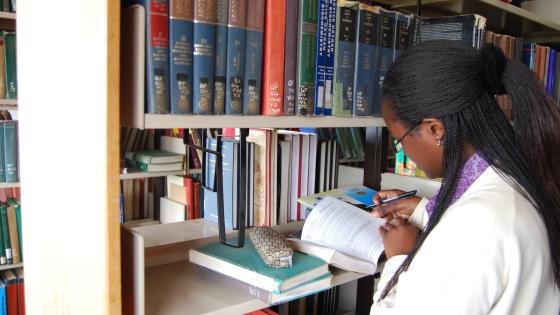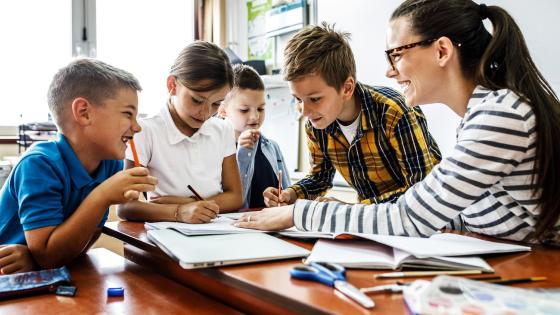To inhibit the spread of the COVID-19 pandemic, governments around the world shut down schools for several months during the first half of 2020. It was clearly expected early on that the closures would cause major interruptions to student learning (e.g. Burgess and Sievertsen 2020). In fact, estimates suggest that if a student loses about a third of a school year of learning, this is associated with an income loss of about 3% on average over the entire working life (Woessmann 2020, Hanushek and Woessmann 2020). But what did the children actually do during the school closures? Who was particularly affected? And how did parents and schools compensate for the closures? To answer these questions, we fielded a time-use survey of over 1,000 parents in Germany that we analyse in a new study (Grewenig et al. 2020).
School closures are about the lack of educator support
Many have argued that the school closures may increase inequality between children from different family backgrounds (e.g. European Commission 2020, UNESCO 2020). We suggest that another dimension of inequality that may be particularly relevant for school closures is the one between low- and high-achieving students. Out-of-school learning implies a large amount of self-regulated learning where students must independently acquire and understand the academic content without the support of trained educators. While self-regulated learning may be feasible for high-achieving students during school closures, it may be challenging for low-achieving students.
A defining feature of school closures is that students do not have the same support of trained educators as in traditional in-person classroom teaching. Ample evidence shows that teachers are probably the most important school input factor for students’ educational success (e.g. Rivkin et al. 2005, Chetty et al., 2014). Teachers provide the traditional teaching activities such as explaining new material or providing learning-stimulating feedback. Our data show that direct contact with teachers evaporated during the school closures in Germany, as in many other countries (e.g. Andrew et al. 2020 for England). Instead, students mostly had to embark on self-regulated learning. Since skill formation is a process of dynamic complementarities in the sense that basic skills are necessary to acquire additional skills (e.g. Cunha et al. 2006), students with lower initial achievement may lack the knowledge and skill base necessary to generate additional learning gains through self-regulated learning. If returns to time invested in independent learning activities are sufficiently low, low-achieving students will replace learning time by other activities that are more rewarding to them.
A survey on students’ time use before and during the school closures
To provide evidence on how the COVID-19 school closures affected the learning time and other activities of low- and high-achieving students, we designed and ran an online survey of 1,099 parents of school-aged children in Germany in June 2020. In our detailed time-use data, we carefully elicit how many hours students spent with a range of activities per day both before and during the school closures. We distinguish between (1) school-related activities such as going to school or learning at home; (2) activities generally deemed conducive to child development such as reading, arts, playing music, or doing sports; and (3) activities generally deemed detrimental to child development such as watching TV, playing computer games, or consuming social media.
The retrospective panel structure of our data allows us to investigate how the closures affected the gap in learning time between low- and high-achieving students, which we categorise by having school grades (in maths and German) that are below or above the median.
To further investigate the extent to which parents and schools compensated for changes in learning time, we additionally elicited parental involvement in home-schooling activities as well as detailed information on schools’ distance-teaching activities.
Low-achievers disproportionately replaced learning time with computer gaming
We find that the school closures had a large negative impact on learning time on average. Overall, students’ learning time more than halved from 7.4 hours per day before the closures to 3.6 hours during the closures.
This reduction in learning time was significantly larger for low-achieving than for high-achieving students. As Figure 1 shows, learning time did not differ significantly between low- and high-achievers before the closures. By contrast, during the school closures high-achievers spent half an hour more per day on school-related activities than low-achievers (3.9 versus 3.4 hours). While the decrease in actual school attendance was similar for low- and high-achievers (children of parents in system-relevant occupations could attend emergency services in school), low-achievers increased home learning significantly less than high-achievers. Most of the gap cannot be accounted for by observables such as socioeconomic background or family situation, suggesting that it is genuinely linked to the achievement dimension.
Figure 1 Activities of low- and high-achieving students before and during the school closures
Source: Grewenig et al. (2020).
Notes: Average hours spent on different activities on a typical workday. During Corona: period of school closures due to COVID-19. Before Corona: period before the school closures. Low- versus high-achievers: students with an average grade in math and German below versus at-or-above the median for their respective school type.
Substituting the reduced learning time, both low- and high-achieving students only mildly extended the time spent on other activities that are generally viewed as conducive for child development. On average, activities such as reading, playing music, creative work, and physical exercise increased from 2.9 to 3.2 hours.
Instead, low-achieving students spent 6.3 hours per day during the school closures on activities such as watching TV, playing computer games, and consuming social and online media that are generally deemed detrimental to child development – nearly three hours more each day than on school-related activities. In comparison, high-achievers spent 1.5 hours less on the detrimental activities. Roughly half of this gap already existed before the school closures, but the increase in detrimental activities was more pronounced among low-achievers (+1.7 hours) than high-achievers (+1.0 hour).
Taken together, our results imply that the COVID-19 pandemic fostered educational inequality between low- and high-achieving students.
Learning gap not compensated by parents or schools
The COVID-19-induced learning gap between low- and high-achieving students was not compensated by parents’ activities. Already before the school closures, parents of low-achievers spent less time learning together with their children than parents of high-achievers (0.4 versus 0.6 hours per day). As parents of low-achievers increased the time investment by less than parents of high-achievers (+0.5 versus +0.6 hours), the school closures only exacerbated this inequality in parental involvement.
The activities of schools did not compensate for the learning gap between low- and high-achieving students either. During the school closures, schools and teachers only carried out a fraction of their usual teaching activities via distance teaching. For instance, only 29% of students had shared lessons for the whole class (e.g. by video call) more than once a week, and only 17% had individual contact with their teacher more than once a week. This reduction in school activities hit low-achieving students particularly hard: compared to high-achievers, low-achievers were 13 percentage points less likely to have online lessons and 10 percentage points less likely to have individual teacher contacts more than once a week.
By investigating inequality along the achievement dimension, several conducive and detrimental activities, and compensation by parents and schools, our study complements other contemporaneous studies such as the English time-use study by Andrew et al. (2020) and several studies of how the school closures affected learning inputs and outcomes (e.g. Bacher-Hicks et al. 2020, Chetty et al. 2020, Engzell et al. 2020, Maldonado and de Witte 2020). Our findings also contribute to the rapidly emerging literature on effects of the COVID-19 pandemic on other economic and social outcomes such as labour markets, families, and wellbeing (e.g. Alon et al. 2020, Chetty et al. 2020, Fetzer et al. 2020, Fuchs-Schündeln et al. 2020).
Policy conclusion: Binding distance-teaching concepts geared towards low-achievers
Education policy faces hard challenges during the COVID-19 pandemic. But much is at stake for the students. At a general level, policymakers should do everything to ensure that all children and adolescents are effectively learning. This implies a return to schools wherever epidemiologically feasible, and where it is not, implementing daily online instruction rather than leaving children on their own.
Specifically, our findings call for universal and binding distance-teaching concepts for school closures that are particularly geared towards low-achieving students. Leaving the decision over whether and how to maintain teaching operations during school closures at schools’ or teachers’ discretion has proven largely unsuccessful in our setting. In fact, there is overwhelming majority support among the German public for proposals to (1) instruct teachers to maintain daily contact with their students, (2) require all schools to switch to online teaching during school closures, and (3) enable online teaching by compulsory teacher training as well as providing digital equipment to students in need (Woessmann et al. 2020). Our results suggest that it is particularly low-achieving students who suffer when support of teachers is unavailable. Supporting their learning when schools have to close will help to contain future educational inequality.
References
Alon, T, M Doepke, J Olmstead-Rumsey, and M Tertilt (2020), “The impact of the coronavirus pandemic on gender equality”, VoxEU.org, 19 April.
Andrew, A, S Cattan, M Costa Dias, C Farquharson, L Kraftman, S Krutikova, A Phimister and A Sevilla (2020), “Inequalities in Children’s Experiences of Home Learning during the COVID-19 Lockdown in England”, IFS Working Paper 20/26, Institute for Fiscal Studies.
Bacher-Hicks, A, J Goodman, and C Mulhern (2020), “Inequality in Household Adaptation to Schooling Shocks: Covid-Induced Online Learning Engagement in Real Time”, Journal of Public Economics, forthcoming.
Burgess, S and H H Sievertsen (2020), “Schools, skills, and learning: The impact of COVID-19 on education”, VoxEU.org, 01 April.
Chetty, R, J N Friedman, N Hendren, M Stepner and the Opportunity Insights Team (2020), “How Did COVID-19 and Stabilization Policies Affect Spending and Employment? A New Real-Time Economic Tracker Based on Private Sector Data”, NBER Working Paper 27431.
Chetty, R, J N Friedman and J E Rockoff (2014), “Measuring the Impacts of Teachers II: Teacher Value-Added and Student Outcomes in Adulthood”, American Economic Review 104(9): 2633-2679.
Cunha, F, J J Heckman, L Lochner, and D V Masterov (2006), “Interpreting the Evidence on Life Cycle Skill Formation”, in E A Hanushek and F Welch (eds), Handbook of the Economics of Education, Vol. 1, North Holland: 697-812.
Engzell, P, A Frey and M Verhagen (2020), “Learning Inequality during the COVID-19 Pandemic”, mimeo, University of Oxford.
European Commission (2020), “Educational Inequalities in Europe and Physical School Closures During COVID-19”, Fairness Policy Brief Series 04/2020.
Fetzer, T, L Hensel, J Hermle and C Roth (2020) “Coronavirus Perceptions and Economic Anxiety”, VoxEU.org, 21 March.
Fuchs-Schündeln, N, M Kuhn, and M Tertilt (2020), “The short-run macro implications of school and childcare closures”, VoxEU.org, 30 May.
Grewenig, E, P Lergetporer, K Werner, L Woessmann, and L Zierow (2020), “COVID-19 and Educational Inequality: How School Closures Affect Low- and High-Achieving Students”, CESifo Working Paper 8648.
Hanushek, E A and L Woessmann (2020), The Economic Impacts of Learning Losses, OECD.
Maldonado, E J and K de Witte (2020), “The Effect of School Closures on Standardized Student Test Outcomes”, Discussion Paper Series DPS20.17, Katholieke Universiteit (KU) Leuven.
Rivkin, S G, E A Hanushek and J F Kain (2005), “Teachers, Schools, and Academic Achievement”, Econometrica 73 (2): 417-458.
UNESCO (2020), Adverse Consequences of School Closures.
Woessmann, L (2020), “Folgekosten ausbleibenden Lernens: Was wir über die Corona-bedingten Schulschließungen aus der Forschung lernen können”, ifo Schnelldienst 73(6): 38-44.
Woessmann, L, V Freundl, E Grewenig, P Lergetporer, K Werner, and L Zierow (2020), “Bildung in der Corona-Krise: Wie haben die Schulkinder die Zeit der Schulschließungen verbracht, und welche Bildungsmaßnahmen befürworten die Deutschen?”, ifo Schnelldienst 73(9): 25-39.









